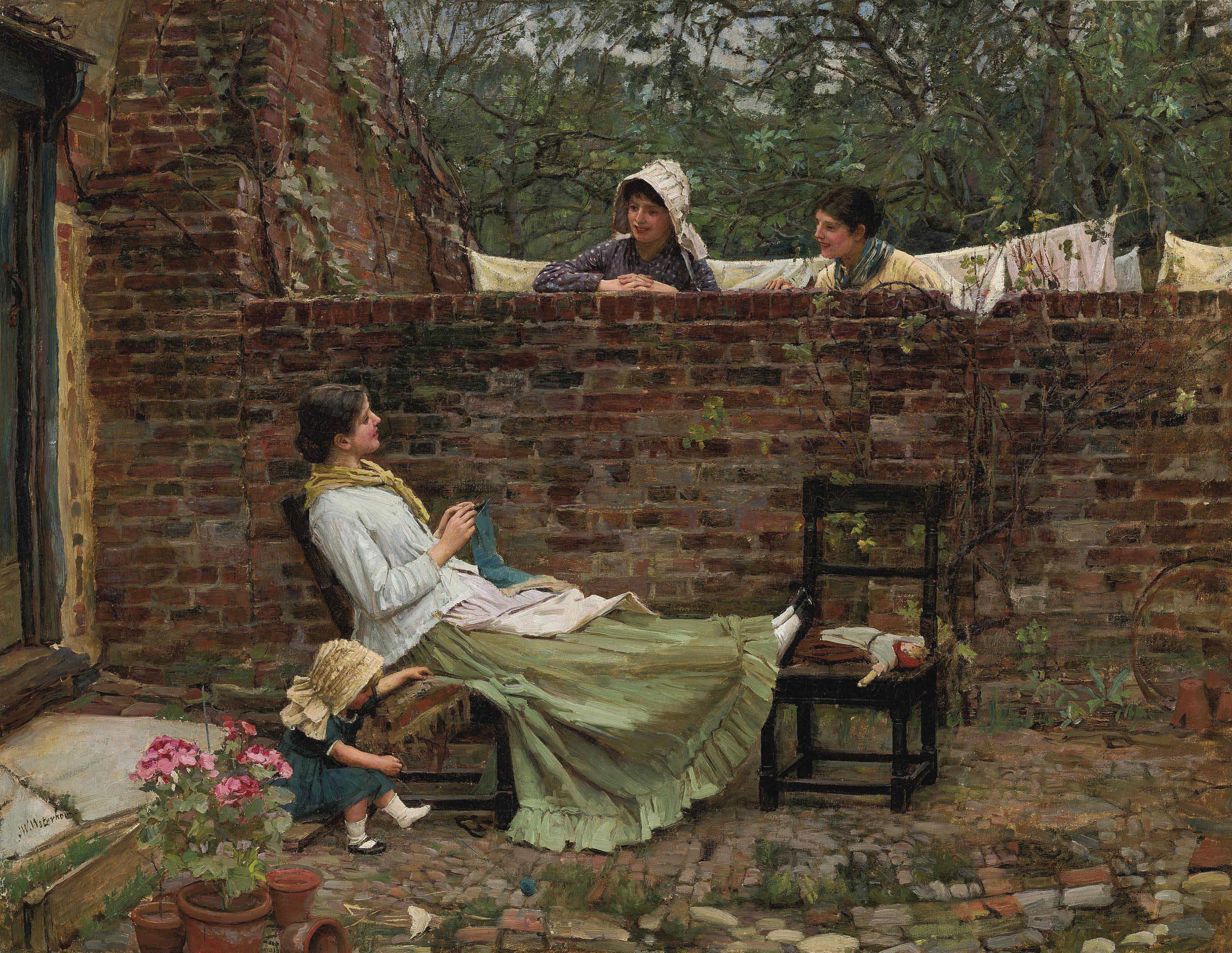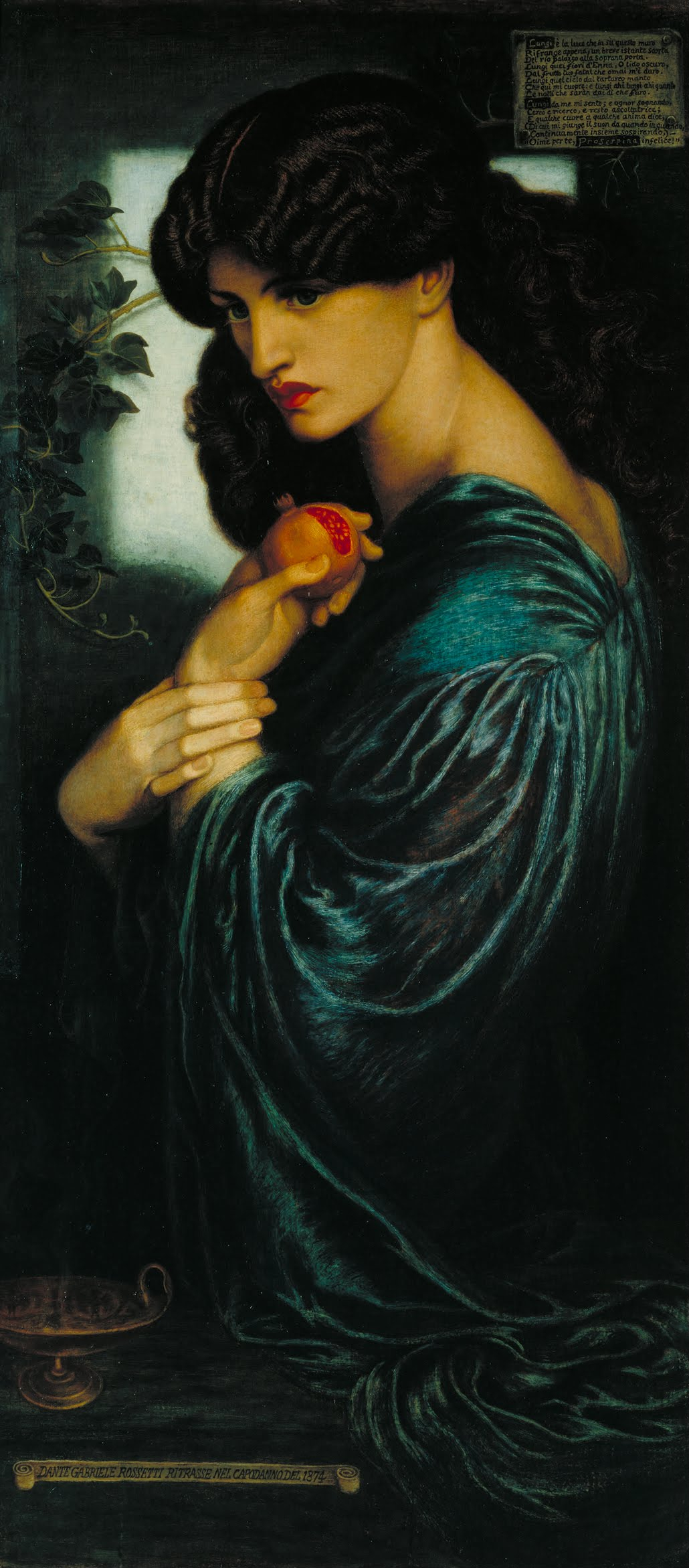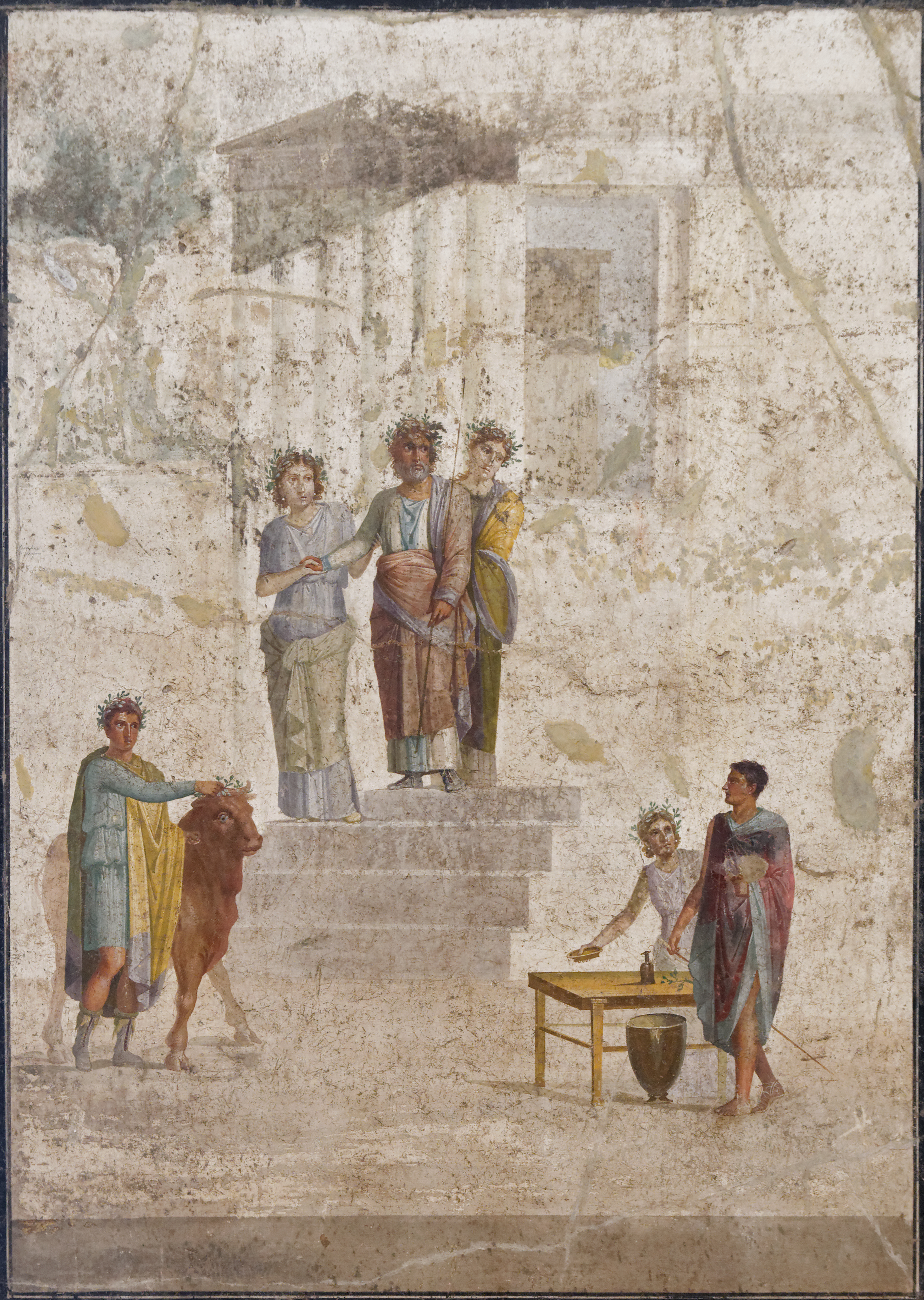|
Jason And Medea (painting)
''Jason and Medea'' is an oil painting in the Pre-Raphaelite style created by John William Waterhouse in 1907. The painting depicts the Colchian princess, Medea, preparing a magic potion for Jason to enable him to complete the tasks set for him by her father, Aeëtes. Medea's determined facial expression shows a characterization consistent with that of Greek literature, particularly Euripides' tragedy Medea (play), ''Medea''. The painting is thematically and visually similar to Waterhouse's The Magic Circle (Waterhouse paintings), ''The Magic Circle''. 1907 paintings Paintings by John William Waterhouse Paintings depicting Greek myths Witches in art Works based on Medea (Euripides play) Cultural depictions of Jason Oil paintings {{20C-painting-stub ... [...More Info...] [...Related Items...] OR: [Wikipedia] [Google] [Baidu] |
John William Waterhouse
John William Waterhouse (6 April 184910 February 1917) was an English painter known for working first in the Academic style and for then embracing the Pre-Raphaelite Brotherhood's style and subject matter. His artworks were known for their depictions of women from both ancient Greek mythology and Arthurian legend. Born in Rome to English parents who were both painters, Waterhouse later moved to London, where he enrolled in the Royal Academy of Art. He soon began exhibiting at their annual summer exhibitions, focusing on the creation of large canvas works depicting scenes from the daily life and mythology of ancient Greece. Many of his paintings are based on authors such as Homer, Ovid, Shakespeare, Tennyson, or Keats. Waterhouse's work is displayed in many major art museums and galleries, and the Royal Academy of Art organised a major retrospective of his work in 2009. Biography Early life Waterhouse was born in the city of Rome to English painters William and Isabella Water ... [...More Info...] [...Related Items...] OR: [Wikipedia] [Google] [Baidu] |
Oil Painting
Oil painting is the process of painting with pigments with a medium of drying oil as the binder. It has been the most common technique for artistic painting on wood panel or canvas for several centuries, spreading from Europe to the rest of the world. The advantages of oil for painting images include "greater flexibility, richer and denser colour, the use of layers, and a wider range from light to dark". But the process is slower, especially when one layer of paint needs to be allowed to dry before another is applied. The oldest known oil paintings were created by Buddhist artists in Afghanistan and date back to the 7th century AD. The technique of binding pigments in oil was later brought to Europe in the 15th century, about 900 years later. The adoption of oil paint by Europeans began with Early Netherlandish painting in Northern Europe, and by the height of the Renaissance, oil painting techniques had almost completely replaced the use of tempera paints in the majority ... [...More Info...] [...Related Items...] OR: [Wikipedia] [Google] [Baidu] |
Oil Painting
Oil painting is the process of painting with pigments with a medium of drying oil as the binder. It has been the most common technique for artistic painting on wood panel or canvas for several centuries, spreading from Europe to the rest of the world. The advantages of oil for painting images include "greater flexibility, richer and denser colour, the use of layers, and a wider range from light to dark". But the process is slower, especially when one layer of paint needs to be allowed to dry before another is applied. The oldest known oil paintings were created by Buddhist artists in Afghanistan and date back to the 7th century AD. The technique of binding pigments in oil was later brought to Europe in the 15th century, about 900 years later. The adoption of oil paint by Europeans began with Early Netherlandish painting in Northern Europe, and by the height of the Renaissance, oil painting techniques had almost completely replaced the use of tempera paints in the majority ... [...More Info...] [...Related Items...] OR: [Wikipedia] [Google] [Baidu] |
Pre-Raphaelite
The Pre-Raphaelite Brotherhood (later known as the Pre-Raphaelites) was a group of English painters, poets, and art critics, founded in 1848 by William Holman Hunt, John Everett Millais, Dante Gabriel Rossetti, William Michael Rossetti, James Collinson, Frederic George Stephens and Thomas Woolner who formed a seven-member "Brotherhood" modelled in part on the Nazarene movement. The Brotherhood was only ever a loose association and their principles were shared by other artists of the time, including Ford Madox Brown, Arthur Hughes and Marie Spartali Stillman. Later followers of the principles of the Brotherhood included Edward Burne-Jones, William Morris and John William Waterhouse. The group sought a return to the abundant detail, intense colours and complex compositions of Quattrocento Italian art. They rejected what they regarded as the mechanistic approach first adopted by Mannerist artists who succeeded Raphael and Michelangelo. The Brotherhood believed the Classical p ... [...More Info...] [...Related Items...] OR: [Wikipedia] [Google] [Baidu] |
Medea
In Greek mythology, Medea (; grc, Μήδεια, ''Mēdeia'', perhaps implying "planner / schemer") is the daughter of King Aeëtes of Colchis, a niece of Circe and the granddaughter of the sun god Helios. Medea figures in the myth of Jason and the Argonauts, appearing in Hesiod's ''Theogony'' around 700 BCE, but best known from Euripides's tragedy ''Medea'' and Apollonius of Rhodes's epic ''Argonautica''. Medea is known in most stories as a sorceress and is often depicted as a priestess of the goddess Hecate. Medea plays the archetypal role of helper-maiden, aiding Jason in his search for the Golden Fleece by using her magic to save his life out of love. Once he finished his quest, she abandons her native home of Colchis, and flees westwards with Jason, where they eventually settle in Corinth and get married. Euripides's 5th-century BCE tragedy ''Medea'', depicts the ending of her union with Jason, when after ten years of marriage, Jason abandons her to wed King Creon's daugh ... [...More Info...] [...Related Items...] OR: [Wikipedia] [Google] [Baidu] |
Potion
A potion () is a liquid "that contains medicine, poison, or something that is supposed to have magic powers.” It derives from the Latin word ''potus'' which referred to a drink or drinking. The term philtre is also used, often specifically for a love potion, a potion that is supposed to create feelings of love or attraction in the one who drinks it. Throughout history there have been several types of potions for a range of purposes. Reasons for taking potions ranged from curing an illness, to securing immortality to trying to induce love. These potions, while often ineffective or poisonous, occasionally had some degree of medicinal success depending on what they sought to fix and the type and amount of ingredients used. Some popular ingredients used in potions across history include Spanish fly, nightshade plants, cannabis and opium. During the 17th to 19th century, it was common in Europe to see peddlers offering potions for ailments ranging from heartbreak to the plague ... [...More Info...] [...Related Items...] OR: [Wikipedia] [Google] [Baidu] |
Jason
Jason ( ; ) was an ancient Greek mythological hero and leader of the Argonauts, whose quest for the Golden Fleece featured in Greek literature. He was the son of Aeson, the rightful king of Iolcos. He was married to the sorceress Medea. He was also the great-grandson of the messenger god Hermes, through his mother's side. Jason appeared in various literary works in the classical world of Greece and Rome, including the epic poem ''Argonautica'' and the tragedy ''Medea''. In the modern world, Jason has emerged as a character in various adaptations of his myths, such as the 1963 film '' Jason and the Argonauts'' and the 2000 TV miniseries of the same name. Persecution by Pelias Pelias (Aeson's half-brother) was power-hungry and sought to gain dominion over all of Thessaly. Pelias was the progeny of a union between their shared mother, Tyro ("high born Tyro"), the daughter of Salmoneus, and the sea god Poseidon. In a bitter feud, he overthrew Aeson (the rightful king), kill ... [...More Info...] [...Related Items...] OR: [Wikipedia] [Google] [Baidu] |
Aeëtes
Aeëtes (; , ; , ), or Aeeta, was a king of Colchis in Greek mythology. The name comes from the ancient Greek word (, "eagle"). Family Aeëtes was the son of Sun god Helios and the Oceanid Perseis, brother of Circe, Perses and Pasiphaë, and father of Medea, Chalciope and Absyrtus. His consort was either (1) Idyia, the youngest daughter of Oceanus, (2) Asterodeia, a Caucasian Oceanid, (3) the Nereid Neaera, (4) Clytia, (5) Ipsia or Eurylyte. According to others, he was the brother of Perses, a king of Tauris, husband of his niece Hecate, and father of Medea, Chalciope and Absyrtus. Yet other versions make Aeëtes a native of Corinth and son of Ephyra, an Oceanid, or else of a certain Antiope. Asterope was also one of the possible mothers of Aeëtes. Mythology Foundation of Colchis Pausanias states that, according to the poet Eumelos, Aeëtes was the son of Helios (from northern Peloponnesus) and brother of Aloeus. Helios divided the land he ruled, and he gave ... [...More Info...] [...Related Items...] OR: [Wikipedia] [Google] [Baidu] |
Medea (play)
''Medea'' ( grc, Μήδεια, ''Mēdeia'') is an ancient Greek tragedy written by Euripides, based upon the myth of Jason and Medea and first produced in 431 BC. The plot centers on the actions of Medea, a former princess of the kingdom of Colchis, and the wife of Jason; she finds her position in the Greek world threatened as Jason leaves her for a Greek princess of Corinth. Medea takes vengeance on Jason by murdering his new wife as well as her own two sons, after which she escapes to Athens to start a new life. Euripides' play has been explored and interpreted by playwrights across the centuries and the world in a variety of ways, offering political, psychoanalytical, feminist, among many other original readings of Medea, Jason and the core themes of the play. ''Medea'', along with three other plays, earned Euripides third prize in the City Dionysia. Some believe that this indicates a poor reception, but "the competition that year was extraordinarily keen"; Sophocles, often ... [...More Info...] [...Related Items...] OR: [Wikipedia] [Google] [Baidu] |
The Magic Circle (Waterhouse Paintings)
''The Magic Circle'' is an 1886 oil painting in the Pre-Raphaelite style by John William Waterhouse. Two copies of the painting were produced. The paintings and a study depict a witch or sorceress using a wand to draw a fiery magic circle on the Earth to create a ritual space for her ceremonial magic. As was common in the period, Waterhouse repeated his subject on a smaller scale, probably at the request of a collector. History The larger prime version of ''The Magic Circle'' was shown at the Royal Academy in 1886, the year after Waterhouse was elected an Associate member. Coming after ''Consulting the Oracle'' and ''St. Eulalia'', this was Waterhouse's third exhibit with a supernatural theme in as many years. The painting was well received at its exhibition, and was purchased for £650 the same year by the Tate Gallery, through the Chantrey Bequest. The painting was extremely successful with the critics and public alike. The smaller 1886 version of ''The Magic Circle'' m ... [...More Info...] [...Related Items...] OR: [Wikipedia] [Google] [Baidu] |
1907 Paintings
Nineteen or 19 may refer to: * 19 (number), the natural number following 18 and preceding 20 * one of the years 19 BC, AD 19, 1919, 2019 Films * ''19'' (film), a 2001 Japanese film * ''Nineteen'' (film), a 1987 science fiction film Music * 19 (band), a Japanese pop music duo Albums * ''19'' (Adele album), 2008 * ''19'', a 2003 album by Alsou * ''19'', a 2006 album by Evan Yo * ''19'', a 2018 album by MHD * ''19'', one half of the double album ''63/19'' by Kool A.D. * ''Number Nineteen'', a 1971 album by American jazz pianist Mal Waldron * ''XIX'' (EP), a 2019 EP by 1the9 Songs * "19" (song), a 1985 song by British musician Paul Hardcastle. * "Nineteen", a song by Bad4Good from the 1992 album '' Refugee'' * "Nineteen", a song by Karma to Burn from the 2001 album ''Almost Heathen''. * "Nineteen" (song), a 2007 song by American singer Billy Ray Cyrus. * "Nineteen", a song by Tegan and Sara from the 2007 album '' The Con''. * "XIX" (song), a 2014 song by Slipknot. ... [...More Info...] [...Related Items...] OR: [Wikipedia] [Google] [Baidu] |
Paintings By John William Waterhouse
Painting is the practice of applying paint, pigment, color or other medium to a solid surface (called the "matrix" or "support"). The medium is commonly applied to the base with a brush, but other implements, such as knives, sponges, and airbrushes, can be used. In art, the term ''painting ''describes both the act and the result of the action (the final work is called "a painting"). The support for paintings includes such surfaces as walls, paper, canvas, wood, glass, lacquer, pottery, leaf, copper and concrete, and the painting may incorporate multiple other materials, including sand, clay, paper, plaster, gold leaf, and even whole objects. Painting is an important form in the visual arts, bringing in elements such as drawing, composition, gesture (as in gestural painting), narration (as in narrative art), and abstraction (as in abstract art). Paintings can be naturalistic and representational (as in still life and landscape painting), photographic, abstract, narrative, sy ... [...More Info...] [...Related Items...] OR: [Wikipedia] [Google] [Baidu] |









